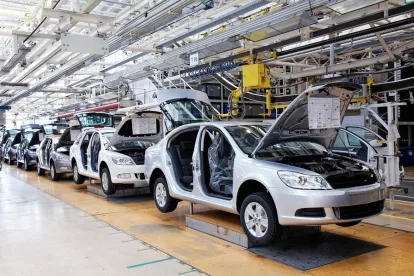We think that we know where our car is made. Turns out, we might not be so right. The more globalized the automotive industry becomes with each passing day, the harder it is to identify an “American-Made” car.

Cars.com has tried with its 2015 American-Made Index. Cars.com considers a vehicle American-Made if it has at least 75 percent domestic content. For the most recent index, there are only seven such cars – seven! Care to guess who is tops before clicking the link to the Index? Wrong! The Toyota Camry is #1. Second, the Toyota Sienna. Fourth, the Honda Odyssey. The other four vehicles are the Chevrolet Traverse (3), GMC Acadia (5), Buick Enclave (6) and Chevrolet Corvette (7).
So, this means that the US no longer makes cars, right? Again, wrong! Domestic auto production is going to approach 12 million vehicles, up from about 8 million in 2010. Ironically, Cars.com shows that as the number of American-Made cars (per its index) plummets, domestic production has gone up. Then, consider that exports of domestically made cars hit a record 2.1 million cars in 2014 and you know that domestic automotive production is thriving, not drying up.
Want more proof that domestic production is thriving? The 75 percent domestic content is an arbitrary cut off. Cars.com noted that if they drop that number to 60 percent, suddenly 57 vehicles qualify and 65% (37 of 57) of those are made by the big three in Detroit, GM, Ford and Fiat Chrysler. Further, foreign OEMs import dozens of vehicles with zero percent domestic content whereas Detroit OEMs have just two vehicles below 5 percent.
So, what really matters is the fact that almost 12 million vehicles will be assembled, produced, etc. in the United States. This drives employment and investment. Take just Japan. The Japan Automobile Manufacturers Association (JAMA) proclaimed that in 2014 Japanese OEMs “cumulative investment in the U.S. reached nearly $43 billion in 2014.” JAMA further asserted that their “member companies’ direct employment topped 91,000” in the U.S.
Is your car “American-Made?” What does it mean? Does it even matter?




 />i
/>i
